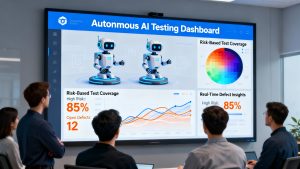In the rapidly evolving landscape of artificial intelligence, Large Language Models (LLMs) have emerged as a groundbreaking technology with the potential to revolutionize how businesses approach AI implementation and utilization. These sophisticated neural networks, comprised of billions of parameters, are poised to become a cornerstone of enterprise technology, promising to usher in significant shifts in AI adoption and application across various industries.
Decoding the Power of LLMs
At their core, LLMs are expansive neural networks that have undergone extensive pre-training on diverse and voluminous datasets. This comprehensive training equips them with the versatility to tackle a wide array of natural language processing tasks with remarkable proficiency. A key attribute that sets LLMs apart is their innate ability to adapt to novel tasks and domains without the need for extensive retraining.
Recent advancements in LLM technology have showcased their prowess in domains previously thought to be the exclusive purview of specialized systems. From generating complex code to providing insights on medical queries and dissecting intricate legal texts, LLMs have demonstrated their adaptability across various specialized fields with minimal domain-specific fine-tuning.
The Evolution of Model Adaptation
Traditionally, adapting pre-trained models to new tasks involved a process of fine-tuning on domain-specific data. However, the latest generation of LLMs has ushered in a paradigm shift. These advanced models exhibit a unique capability to adapt to new tasks through the ingenious use of prompts – specific examples provided as natural language inputs.
This breakthrough has effectively eliminated two significant barriers to AI adoption: the necessity to build models from the ground up and the requirement for substantial amounts of training data. The implications of this development are far-reaching, potentially democratizing access to sophisticated AI capabilities across various sectors and industries.
The Rise of Prompt Engineering
The advent of generative models like GPT-3 has catalyzed a surge of interest in the field of prompt engineering. This emerging discipline focuses on crafting effective prompts to elicit desired outputs from LLMs. Alongside this development, supporting technologies such as vector databases and prompt chaining have emerged, continually expanding the scope and applicability of LLMs.
Prompt engineering tools and techniques have evolved rapidly, enabling LLMs to tackle complex tasks that extend far beyond simple conversations. Advanced techniques like chain-of-thought prompting have significantly enhanced the performance of LLMs in tasks requiring logical reasoning. These developments have paved the way for the design and orchestration of sophisticated multi-step workflows through prompt-chaining tools.
Augmenting LLM Capabilities
The ecosystem surrounding LLMs continues to grow, with supporting technologies emerging to augment and extend the capabilities of standalone models. Vector databases and plugins, for instance, are playing a crucial role in connecting LLMs with external data sources and systems. This integration is key to overcoming inherent limitations of LLMs and unlocking new possibilities for their application in real-world scenarios.
As LLMs continue to evolve into a form of general-purpose AI, with models becoming increasingly more capable, they are set to play a significant role in driving enterprise AI adoption and fostering innovation across various sectors.
Innovating with LLMs in the Enterprise
The accessibility of both proprietary and open-source large language model platforms has dramatically increased the customizability of these models. Enterprises now have the flexibility to leverage out-of-the-box APIs to infuse LLM capabilities into existing systems or to build, optimize, and host entirely customized use cases.
This accessibility has made it imperative for companies across industries to begin experimenting with LLMs and to strategically plan for their adoption. While initial enterprise experimentations with LLMs may focus on mature conversational and generative capabilities, forward-thinking organizations must look beyond these first-order use cases.
A strategic roadmap for LLM adoption should encompass not only immediate applications like conversational interfaces and predictive search prompts but also anticipate how emerging capabilities can be incorporated in novel ways to explore potential innovation opportunities.
A Framework for LLM Innovation and Scaling
To guide enterprises in their journey of large language model adoption and innovation, a progressive framework can be employed. This framework outlines a path that begins with low-risk internal use cases, such as writing assistants or content generators, and gradually progresses to more complex external use cases powered by combinatorial possibilities.
The horizontal progression of this framework illustrates how standalone models, while powerful, offer limited possibilities. However, when these models are interfaced and integrated with external databases, knowledge sources, and software systems, their efficacy increases exponentially.
By combining the natural language capabilities and foundational knowledge of LLMs with contextual information and external systems, enterprises can harness these models to drive innovation in various forms, including automation, intelligence augmentation, conversational interfaces, and unstructured data labeling.
The vertical progression of the framework emphasizes the importance of leveraging the evolving abilities of large language models, such as multimodality, reasoning, and the capacity to execute actions like web searches and navigation. By exploring possibilities along both dimensions, enterprises can identify unique opportunities to innovate and generate value.
Navigating Challenges and Considerations
Despite the immense potential of large language models, several challenges and considerations must be addressed for successful enterprise adoption. These include:
- Safety and security concerns
- High operational costs
- Performance inconsistencies and reliability issues
- Challenges in explainability and transparency
- The tendency of LLMs to generate false or misleading information (hallucination)
- Uncertainties surrounding emerging AI regulations
- Privacy and intellectual property risks
- Significant environmental impact due to high resource consumption
To mitigate these risks, enterprises are advised to begin their LLM journey with internal, low-risk use cases, as outlined in the progressive framework. This approach provides a safe starting point for experimentation and learning.
The Path Forward
As the field of LLMs continues to evolve, it is inevitable that newer, more efficient, and more powerful models will emerge. To remain agile and adaptable in the face of these rapid developments, enterprises must carefully architect their backend systems and select technology service partners that minimize lock-in risks.
The choice of LLM and the strategy for its implementation will ultimately determine whether these powerful tools become valuable assets or potential liabilities for businesses. Success in generating value from LLMs will come to those enterprises that can contextually exploit their potential in a responsible and resilient manner.
In conclusion, while the excitement surrounding the generative and conversational capabilities of AI is palpable, it is crucial for enterprises to maintain a broader perspective. By approaching LLM adoption strategically and responsibly, businesses can harness the transformative power of this technology to drive innovation and create lasting value in the AI-driven future.
Read more such articles from our Newsletter here.



